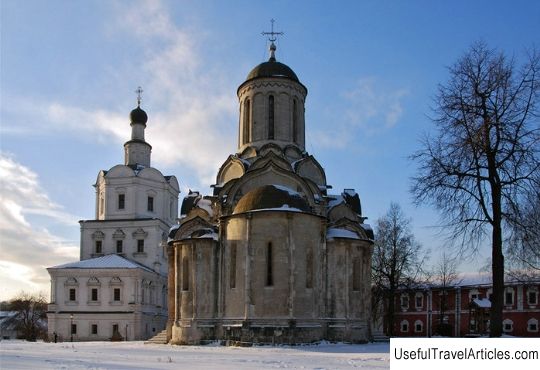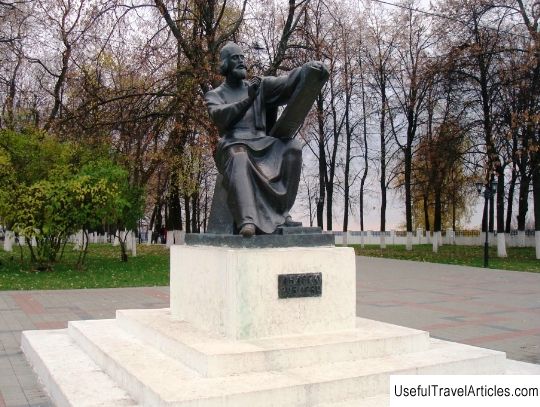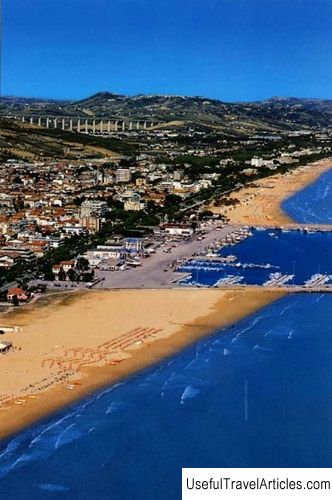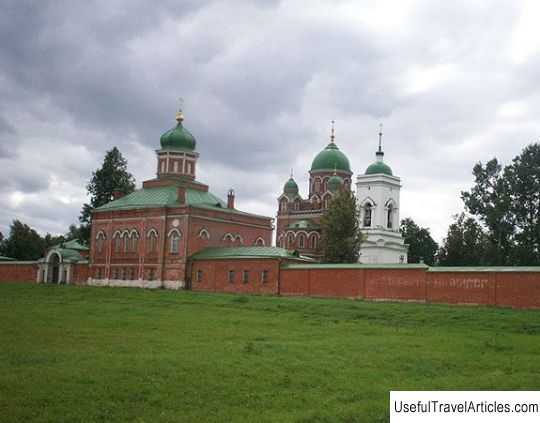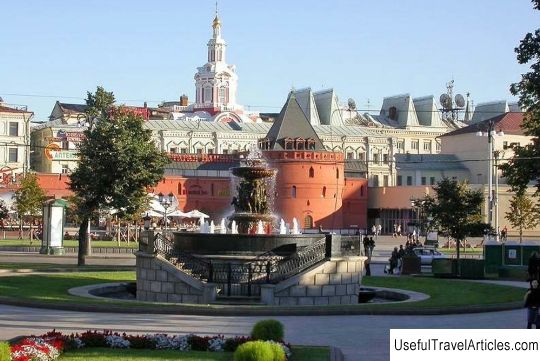Spaso-Andronikov monastery description and photo - Russia - Moscow: Moscow
Rating: 8,2/10 (6794 votes) 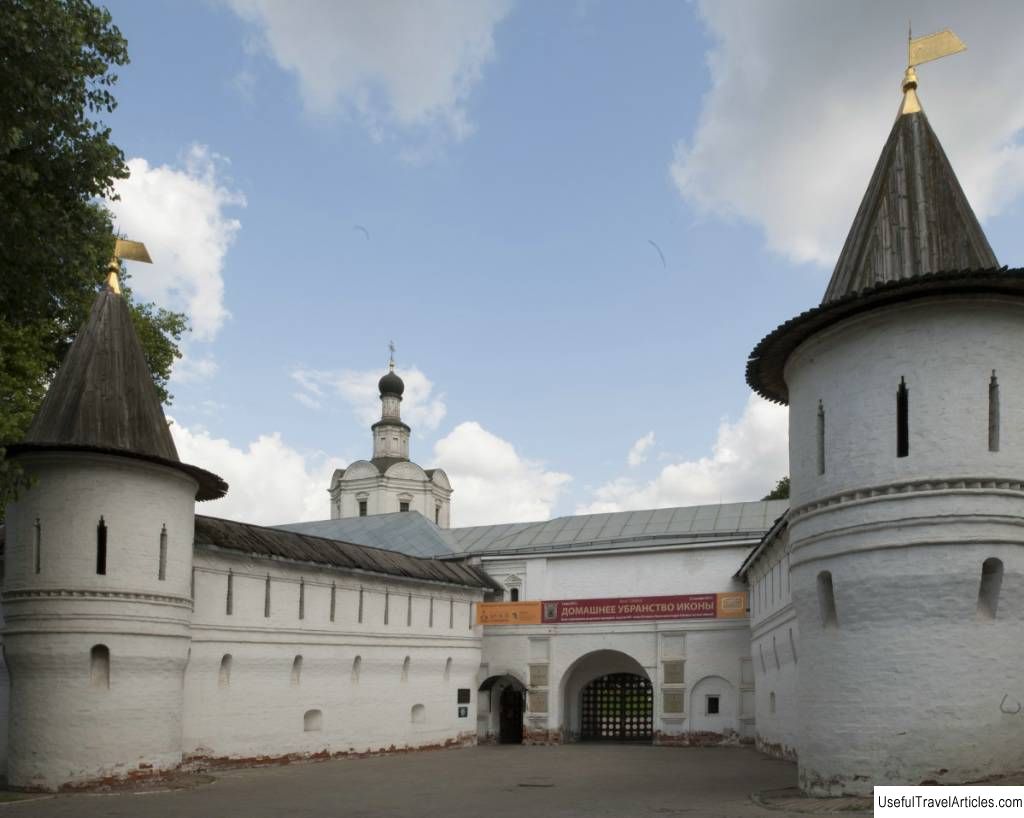
Spaso-Andronikov monastery description and photos - Russia - Moscow: Moscow. Detailed information about the attraction. Description, photos and a map showing the nearest significant objects. Photo and descriptionThe former Orthodox monastery, which is located in Moscow near Andronievskaya Square, was called differently: Andronikov, Spaso-Andronikov and Andronikov Monastery of the Savior Not Made by Hands. Today, the Andrei Rublev Central Museum of Old Russian Culture and Art is open in the complex of buildings where the monastery was located before the revolution. Divine services are held only in the Savior Cathedral on the territory of the former monastery. In 2019, the Russian Orthodox Church made a proposal to transfer all the premises of the former monastery for their use in accordance with its own charter. History of the founding of the monasteryThe theological discipline, which deals with the study of the lives of the saints, is called hagiography. According to hagiographers, Metropolitan of Kiev and All Russia Alexy , who went to Constantinople in 1354, almost died, being caught on the way by a strong storm. He prayed a lot to be saved, and promised, in case of a successful outcome, to build a cathedral in Moscow. The temple was to be consecrated in honor of the saint who would patronize the day the journey ended. The ship with the Metropolitan on board entered the Golden Horn Bay on the day of celebration in honor of the Savior Not Made by Hands , and the monastery in Moscow, founded by the saint, was consecrated as Andronikov Not Made by Hands Monastery. Secular scientists , who investigated the issue, explain why the founding date of the monastery is 1357. According to historians, Metropolitan Alexy, who visited Constantinople again in 1356, brought to the monastery the icon of the Savior Image Not Made by Hands , which has become a revered shrine of the monastery. He handed it over to the monastery in August 1357, when the monastery's Savior Cathedral was consecrated. In honor of the Bay of Constantinople, a tributary of the Yauza was named, and one of the nearby streets of the capital was renamed Zolotorozhsky Val. The name of the monastery also contains the name of its first abbot - Andronicus , who was one of his favorite students and companions of St. Sergius of Radonezh. Abode in the Middle Ages In 1368 year, a fire broke out in the monastery, and the first Savior Cathedral , built of wood, was completely destroyed in the fire. Soon after the tragedy, the temple was rebuilt, using thin fired brick, called plinth, as a building material. In the first third of the 15th century, the cathedral was thoroughly rebuilt, and only white-stone reliefs with fragments of plant compositions and mythical animals depicted on them remained from the former temple. In the 20s of the 15th century, a monk of the Andronikov Spaso-Monastery was famous and revered Russian icon painter Andrei Rublev . It is believed that the master died at the monastery in 1428 during an epidemic and was buried there. However, his grave has not yet been found. In the second half of the 15th century, a settlement arose outside the walls of the monastery, called the monastery settlement. There lived artisans who made bricks. The Kremlin was being built in Moscow at that time, and bricks for the construction of walls and towers were required in great quantities. The Andronikov monastery itself at this time became one of the largest centers for the correspondence of church books in Russia. The monastery housed numerous works by the famous religious publicist and writer Maxim the Greek . The monastery in the 17th-20th centuries Tsarina Evdokia Lopukhina at the end of the 17th century began rebuilding the monastery. With her light hand, a temple appeared in the monastery over the refectory, containing the churches of Metropolitan Alexei and Michael the Archangel. The lower tier of the temple was intended for the Lopukhins family tomb. A small Church of the Icon of the Sign of the Mother of God was erected there. A few decades later, the walls of the monastery were rebuilt from stone. A bell tower rose to the sky above the Holy Gates, the height of which was 73 m. The author of the project Rodion Kazakov placed in the lower tier of the bell tower a church in the name of St. Simeon the God-Receiver . During the war with Napoleon, the monastery was plundered by the French, and after the invaders set fire to the monastery, the archive, the iconostasis and the head of the Spassky Cathedral died in the fire. The temple was restored in the middle of the 19th century, when two side chapels were added to the cathedral - St. Andronicus and the Assumption of the Virgin. The arrival of Soviet power was met by a dozen monks of the Andronikov monastery, but only a year after the revolution the monastery was closed. The first concentration camp was placed within its walls, where the opponents of the new government were kept. Until 1922, mass shootings and executions of officers of the tsarist army were carried out on the territory of the monastery, and then a colony for street children was opened. In 1928 the monastery was taken over by the Hammer and Sickle plant and rooms for workers were arranged in its premises. Soon the bell tower of Rodion Kazakov and the necropolis of the monastery with the graves of the icon painter Andrei Rublev, the patron of the arts Pavel Demidov, the founder of the Russian drama theater Fyodor Volkov and many nobles whose names are forever inscribed in Russian history were destroyed. Revival of the monastery After the end of the Great Patriotic War, historians managed to prove that the Savior Cathedral of the Andronikov Monastery is the oldest surviving building in the capital. The painter and academician Igor Grabar created an initiative group in 1947, which appealed to the government with a proposal to create a museum on the territory of the monastery. Stalin gave the go-ahead, but the work was frozen soon after his death, and resumed only at the end of the 50s of the last century. 1960 was declared by UNESCO as the year of the Russian icon painter A. Rublev: from the birthday of the master Old Russian painting has passed six centuries. The Soviet government, under pressure from the international cultural community, was forced to allow the opening of the exhibition, and the museum in the Andronikov Monastery began its work. The cathedral of the monastery was consecrated again in 1989 , and now it hosts regular services. The destroyed bell tower was not restored, but only a wooden belfry was built. In addition to the Savior Cathedral, the refectory (early 16th century), stone towers and walls (17th-18th centuries), the abbot's chambers (late 17th century), the Baroque Church of the Archangel Michael (late 17th - early 18th centuries), Brothers Corps have survived on the territory of the Andronikov Monastery. (beginning of the 18th century), the building that housed a theological school (first third of the 19th century) and the ancestral tomb of the Lopukhins' family. In 1993, as a result of archaeological research, the ancient throne of the Savior Cathedral and unknown burials under it were discovered ... Museum of Old Russian Culture and Art named after A. Rubleva The initiator of the creation of the museum on the territory of the Andronikov Monastery was a group of scientists, which included the architect and restorer P. Baranovsky, academician and artist I. Grabar, archaeologist N. Voronin and writer P. Maksimov. The scientists substantiated their proposal by the fact that the walls of the Church of the Savior Not Made by Hands on the territory of the monastery were painted by Andrei Rublev and his friend Daniil Cherny. The exposition was officially opened in 1960. Today the museum collection contains more than 13 thousand exhibits , including not only icons, but also frescoes, wooden sculptures, old Russian books - handwritten and old-printed and archaeological rarities found during the restoration of the Savior Cathedral of the Andronikov Monastery. The most valuable and famous exhibits exhibited in the Rublev Museum, dated to a huge historical period from the 13th to the 20th century: - The Icon of the Almighty Savior from Gavshinka is the oldest exhibit in the museum collection. The image of the Savior was written, according to some assumptions, in the XIII century, and according to other researchers - in the XI-XII centuries in Byzantium. The origin of the icon can be traced only from the end of the 18th century, when it was in the Church of the Savior in the village of Gavshinka near Yaroslavl. The icon has a rather impressive size - 123x83 cm and is very well preserved. - A small icon at the entrance to the Church of Archangel Michael , where most of the exhibits are exhibited, also has a long history. This is an "inset" image that was placed in the Spassky Cathedral during its reconstruction in the 30s of the 15th century. The icon is embroidered with gold and silver and dates from the first third of the 15th century. - frescoes worthy of special attention of the museum visitors were brought from different churches in Russia. The works made by ancient craftsmen for the Church of the Savior on Nereditsa are especially valuable. These frescoes were painted in the 12th century. During the creation of the Uglich reservoir, the Trinity Cathedral of the Makaryevsky Kalyazin Monastery was flooded, whose 17th century frescoes are also kept in the A. Rublev Museum. During the construction of the Gorky power plant, several churches were lost, including the Church of the Resurrection in Puchezh. Her frescoes of the 18th century were saved and exhibited in the Andronikov Monastery, among other masterpieces of the church wall painting. - Restoration of the Savior Cathedral of the Andronikov Monastery, which began in the middle of the last century on the initiative of the group of I. Grabar, brought many archaeological finds . The museum collection showcases handmade stove tiles; dishes and church utensils; bells; products made in filigree technique and decorated with enamel; tombstones preserved from the lost graves of the monastery necropolis. - A special place in the museum is given to old books . Among the exhibits are manuscripts and early printed books, scrolls and letters. One of the oldest rarities is a book about the life of Basil the Great, dated to the 15th century. Before the entrance to the monastery on Andronievskaya Square in 1985, a monument to Andrei Rublev was erected. Rublev's portraits, created during the life of the icon painter, have not survived, and the sculptor O. Komov introduced the viewer to a creative, seeking and deeply religious artist. In the Spassky Cathedral of the Andronikov Monastery, fragments of plant ornament on the slopes of the windows have been preserved, which were part of the frescoes painted by Rublev and became the “final handicraft” of his life. Notes
       We also recommend reading Chobe National Park description and photos - Botswana: Chobe Topic: Spaso-Andronikov monastery description and photo - Russia - Moscow: Moscow. |
